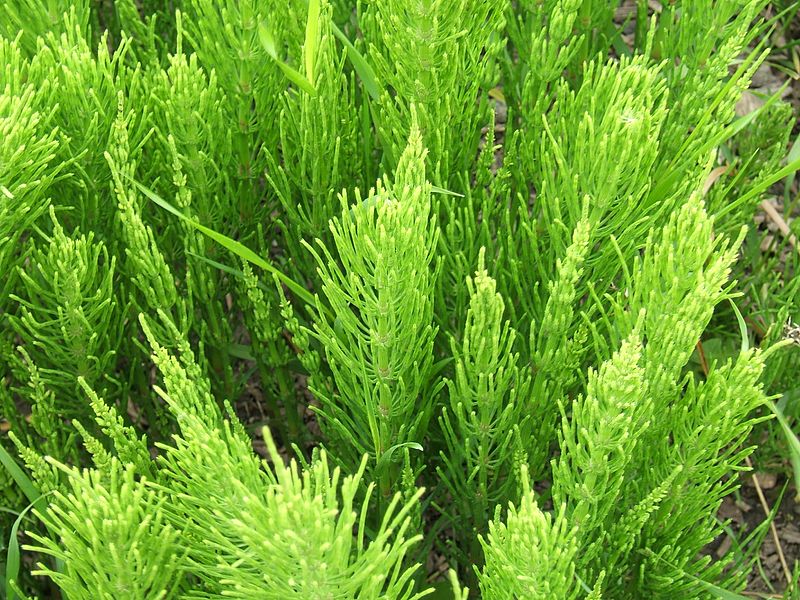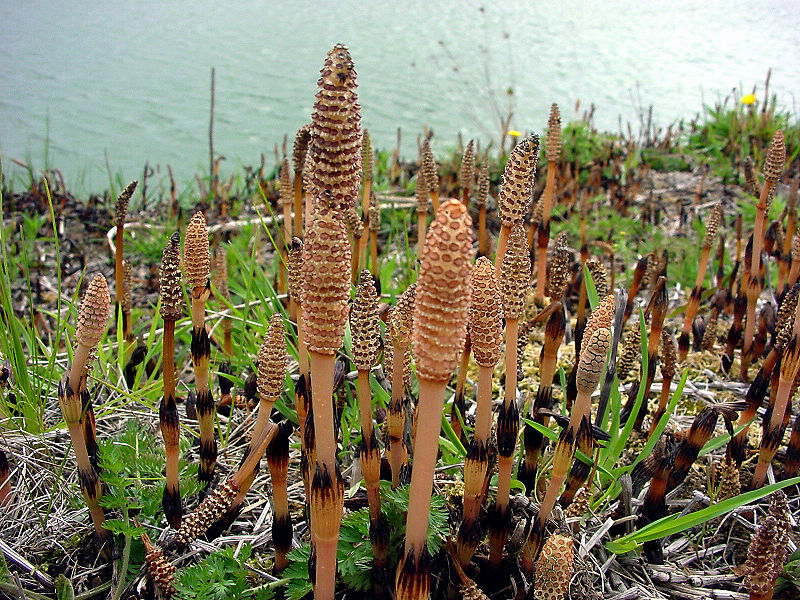
Also known as scouring rush, this is a herbaceous perennial that bears spores rather than seeds and is more closely related to ferns than to seed bearing or flowering plants. Is is native to North America from Newfoundland west to Alaska and south to Georgia, Alabama, Texas, and California where it grows in a variety of habitats including damp and open woodlands, pastures, fields, meadows, swamps, disturbed sites, and near the edges of streams. Growing from branched creeping rhizomes that can penetrate the soil over six feet deep, common horsetail produces two distinct types of stems; fertile and sterile. The fertile stems appear in mid-spring and are two to twelve inches tall. They are tan, unbranched, and terminate in a cone -like structure that resembles a morel and carries the spores. It is up to 1 1/4 inches long, light brown, oblong, and rounded at the tip. After releasing their spores, the fertile stems wither away. The sterile stems appear from mid-spring to mid-summer and persist into fall. They are green, jointed, hollow, from two to twenty four inches long and carry up to twenty whorls of scale like, inconspicuous leaves at each node on at least the upper two-thirds of their length. Plants spread primarily by rhizomes, may become weedy and invasive, and are extremely hard to eradicate. Both fertile and infertile stems are attractive in a bog garden but should be enclosed in a container to prevent unwanted spread. The genus name, Equisetum, comes from the Latin words equus, meaning horse, and seta meaning bristle, and refers to the resemblance of the infertile stems to the tail of a horse. The specific epithet, arvense, is from the Latin word arvum, meaning plouged, and refers to the growth of the plant in arable soil or disturbed areas. Photo Credit MPF Wikimedia

Type: Herbaceous perennial
Bloom: No flowers; cone-like fertile stems ornamental
Size: 4″-3′ H
Light: Full sun to part sun
Soil: Average, medium moist to wet
Hardiness: Zones 7-10
Care: Control spread; cut back old stems in winter
Pests and Diseases: None of significance
Propagation: Division
Companion Plants: Venus fly trap, pitcher plant, Lousiana iris
Outstanding Selections: None available
Photo Credit: F. Lamiot Wikipedia